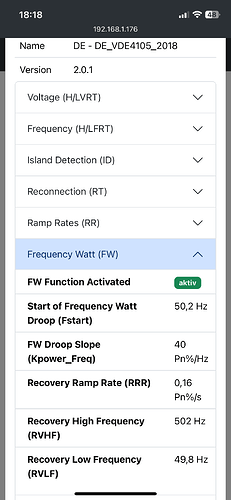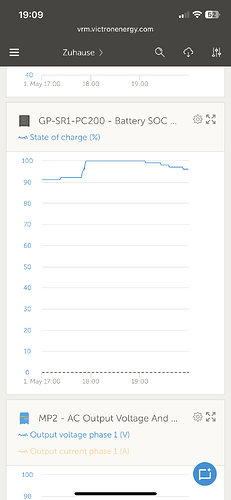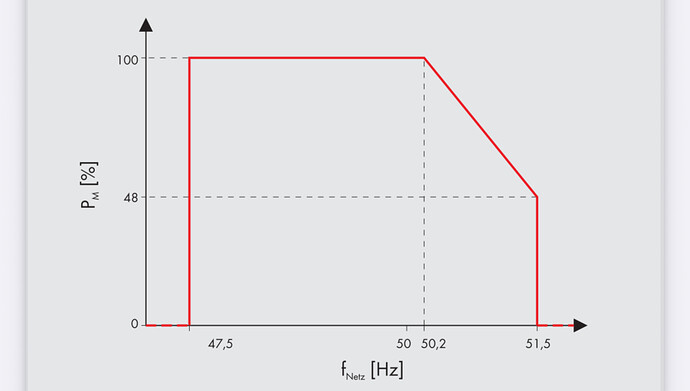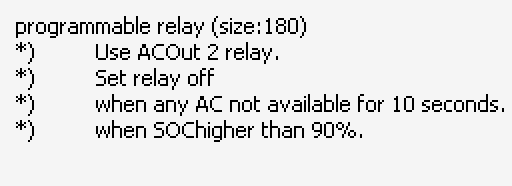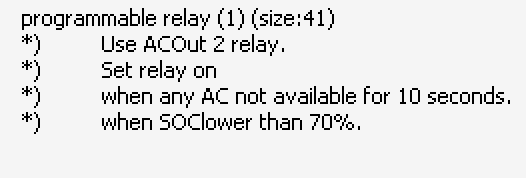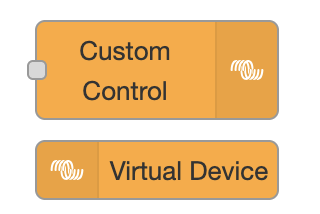Hello
I started with AC-coupled PV Hoymiles inverters for self-consumption, under the regimen the french grid operator allows (Enedis CACSI) up too 3000Wc without too muchn paperwork, which I admin I’m not very fond of.
First 1500Wc with 4 modules in early 2023
Then 3 additional modules bringing it to 2700Wc in late 2024
With this I have a DIY water heater PV router.
With the uprade I ended up with PV excess I could not entirely shove into the water heater. Adding to that, my local grid has a below-average reliability that is unlikely to be a transient condition, the charm of living on the countryside.
So I took the dive and added an inverter :
- Multiplus-II GX 48/5000
- 2 Pylontech US5000 batteries
Final result with the MP-II besides the main electric panel
I had to cram all of this in a dwindling available space, as its placement had definitely not been something I had planned for when we renovated this house in 2021-2013, a refresh from bare stone walls with little else being kept.
I used Legrand DLP trunking to hide the cabling, with the added bonus that you can clip sockets on it, I used that to keep an RJ45 to expose the VE.Bus connector so I don’t need to remove the Multiplus cover to use VEConfigure with the MK3.
Hiding the cabling between this trunking and the MP cable glands needed a little improvisation, I used 20mm rigid conduit.
And to hide that, as well as the Multiplus power switch that’s way to exposed to mishaps, a custom made cache from a bent plastic panel.
The PV inverters remain AC coupled. Since Hoymiles is so far not certified by Victron (I hope they could be, someday not too far) there is a risk should they fail to timely limit / cut their power while off grid when the battery is fully charged.
I have considered the options of DC-coupling my PV, but the scattered locations, cable lenghts, made this unpractical and unreasonably expensive.
So, they remain AC coupled on the MP input side.
I have, however, added switches on the panel that let connect them on the MP output, under close supervision, in case of emergency, such as a long grid outage during day, to top up the batteries and see them through the outage without cutoff.
On the automation side, I’m really just starting, this system has been running less than 2 weeks.
Still looking at the possibilities of nodered, I was already planning to run one on my homeserver but having one directly on the GX controller is definitely a perk for availability.
Right now I have a flow for my water heater, which still needs improvement to work well with ESS.
What I’m looking for is to let any PV excess of the day go into the water heater until it’s charged, then let the excess be used by the ESS for the battery. Ideally, with the batterylife algorithm still kicking in when needed to raise the ESS active SoC.
I ran across this
which is interesting but right now I’m not wanting to modify the OS without knowing where I’m going. It’s not as if I had a lab MP; if I screw the one I have I’ll have to deal with the outage while I reinstall it.
I am also keeping an eye on the memory usage of the MP-II GX board, since this model has only 512MB and with nodered loaded it’s already quite filled, that’s an additional factor making me wary of adding running services, third party or not, on the OS.
Well, while the hardware implementation is mostly done, I still have work to do to bring this system to expectations.





